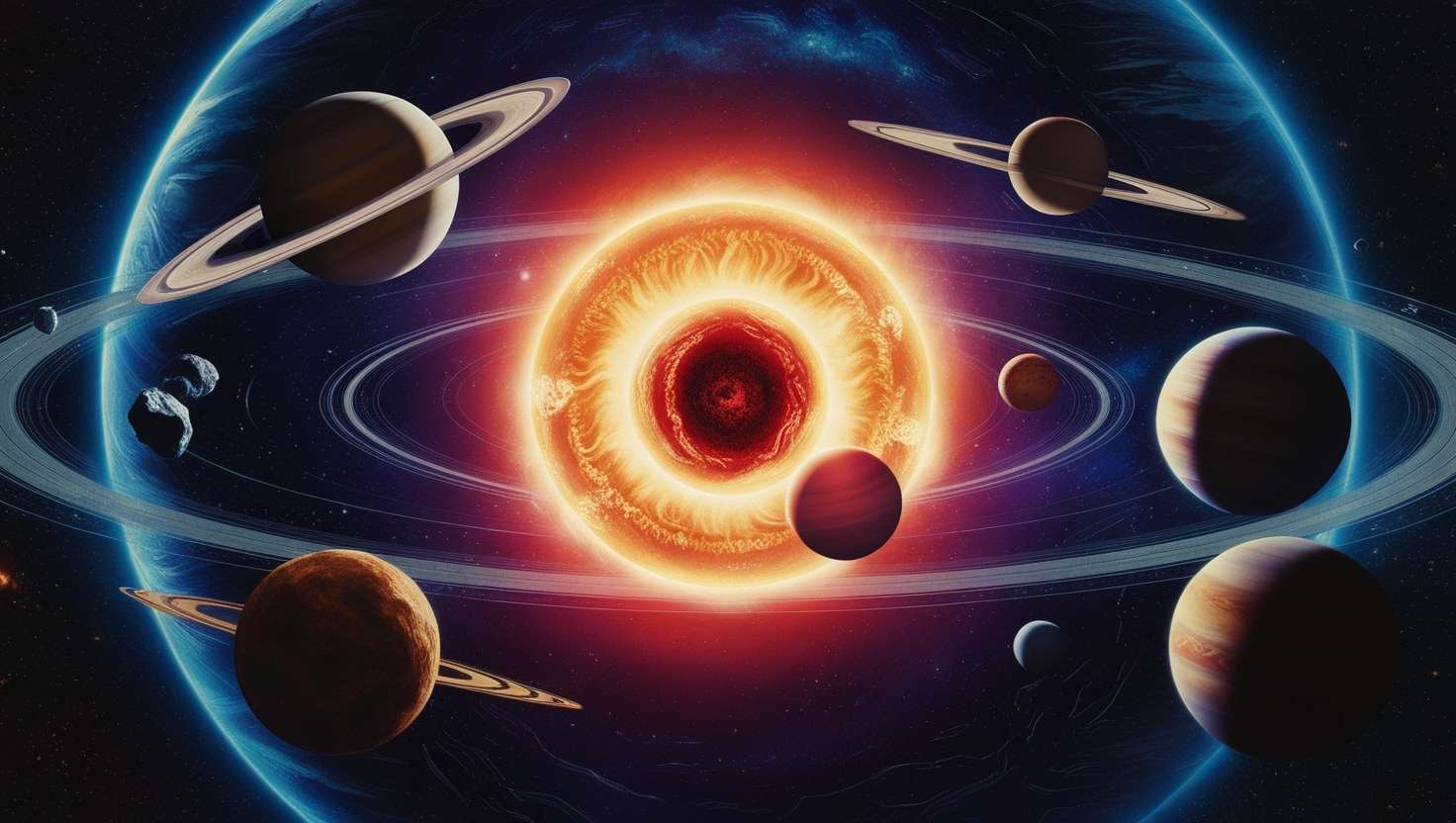Table of Contents
ToggleUnveiling the Mysteries of Our Solar System
Our solar system is a captivating tapestry of planets, moons, asteroids, and dwarf planets, each with its own intriguing characteristics and mysteries.
The Sun: A Stellar Powerhouse
The Sun, a massive sphere of hot plasma at the center of our solar system, fuels life on Earth through constant nuclear fusion. This process converts hydrogen into helium, releasing immense energy in the form of light and heat.
The Planets: Diverse Worlds
The eight planets of our solar system span a range of sizes, compositions, and environments, each offering a unique glimpse into planetary formation and evolution.
-
Mercury: The Swift Messenger Mercury, the closest planet to the Sun, orbits swiftly and experiences extreme temperature fluctuations between its scorching dayside and freezing nightside. Its surface is marked by countless impact craters, resembling Earth’s Moon.
-
-
Earth: The Blue Gem Our home planet, Earth, stands out as a haven for life with its moderate temperatures, vast oceans, and protective atmosphere. Its dynamic surface features continents, oceans, and a diverse biosphere that thrives under the nurturing warmth of our Sun.
-
-
Mars: The Red Planet Mars, with its rusty red surface and polar ice caps, has long captured our imagination. It boasts a unique landscape with features that have intrigued scientists for centuries.
-
-
Jupiter: The Giant Jupiter, the largest planet, dominates the solar system with its massive size and powerful magnetic field. Its swirling clouds of gas and iconic Great Red Spot reveal a dynamic atmosphere teeming with storms and mysteries.
-
-
Saturn: The Ringed Jewel Saturn’s dazzling rings, composed of icy particles and debris, make it one of the most visually striking planets. Beneath its rings lies a gas giant with a complex atmosphere and a diverse family of moons.
-
-
Uranus: The Tilted Ice Giant Uranus orbits the Sun on its side, giving it a unique appearance and extreme seasonal variations. It is a cold, gaseous planet with a faint ring system and a collection of moons that hold clues to its turbulent past.
-
-
Neptune: The Blue Giant Neptune, the outermost gas giant, is known for its vivid blue hue and dynamic atmosphere. It boasts the fastest winds in the solar system and a collection of moons, including Triton, a captured Kuiper Belt object.
-
Dwarf Planets and Celestial Objects
Beyond the major planets, our solar system hosts a variety of dwarf planets, asteroids, and comets, each contributing to our understanding of planetary formation and evolution.
Kuiper Belt and Beyond
The Kuiper Belt, a region of icy bodies beyond Neptune’s orbit, includes objects that provide insights into the early stages of our solar system’s history. Beyond the Kuiper Belt lies the Oort Cloud, a vast shell of cometary nuclei that extends far into interstellar space.
Moons and Satellites
Many planets in our solar system host moons with diverse features and potential for scientific exploration.
-
Earth’s Moon: Our Celestial Companion The Moon, Earth’s only natural satellite, has played a crucial role in our planet’s history and continues to inspire scientific inquiry through missions and lunar exploration.
-
Europa: Moon of Potential Europa, one of Jupiter’s moons, has a subsurface ocean beneath its icy crust, raising the possibility of habitable environments beyond Earth.
Exploring the Unknown
Studying our solar system through space missions, telescopic observations, and robotic explorers enhances our understanding of planetary science and our place in the cosmos.
Conclusion: A Cosmic Tapestry
- Technological Advancements: Advances in technology, such as spacecraft propulsion systems and remote sensing instruments, continue to revolutionize our ability to explore and study celestial bodies.
- Planetary Formation: Insights gained from studying our solar system’s planets, moons, and asteroids provide clues about the processes that shaped their formation over billions of years.
- Habitability Studies: Discoveries of potential habitable environments, such as subsurface oceans on moons like Europa and Enceladus, prompt further investigations into the origins and potential for extraterrestrial life.
- Future Missions: Anticipated future missions, such as the James Webb Space Telescope and proposed missions to Europa and Titan, hold promise for uncovering new mysteries and expanding our knowledge.
- Educational and Inspirational Impact: The exploration of our solar system captivates and inspires people of all ages, fostering scientific curiosity and encouraging future generations to pursue careers in space exploration and astronomy.
- Cosmic Perspective: Studying our solar system provides a broader perspective on Earth’s place in the universe, emphasizing both the uniqueness and interconnectedness of planetary systems.
- Continued Collaboration: International collaboration in space exploration enhances global scientific cooperation and strengthens efforts to address complex challenges, such as planetary defense and sustainable space exploration.
- Ongoing Discoveries: The dynamic nature of scientific discovery ensures that our understanding of the solar system will continue to evolve, with new findings challenging existing theories and sparking further exploration.
- Humanity’s Legacy: As we unravel the mysteries of our solar system, we contribute to a legacy of exploration that extends beyond our time, shaping our understanding of the cosmos for generations to come.
